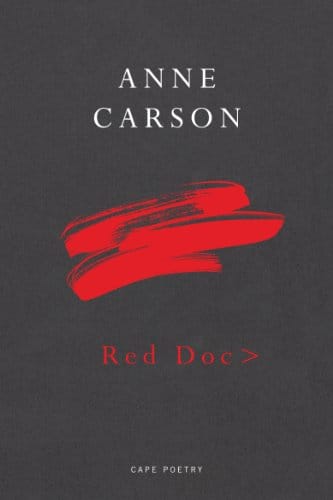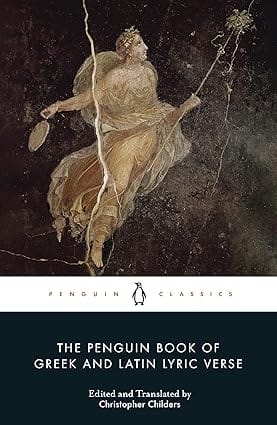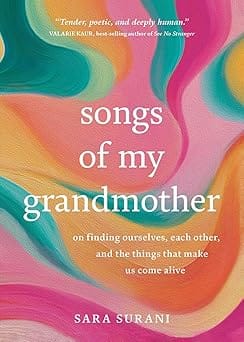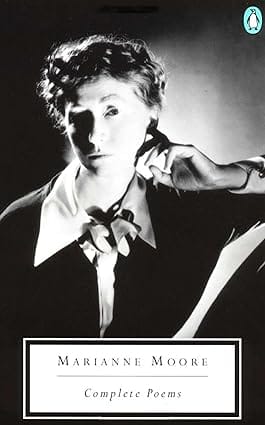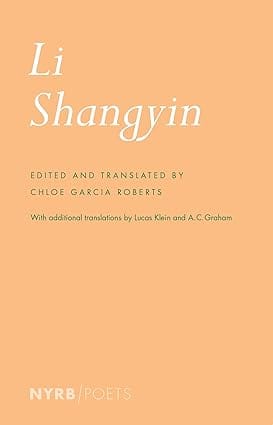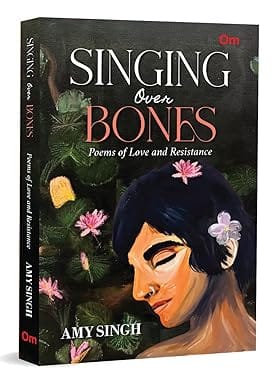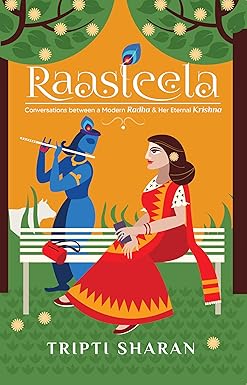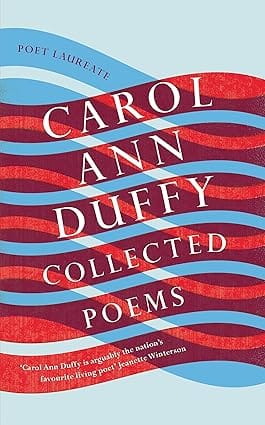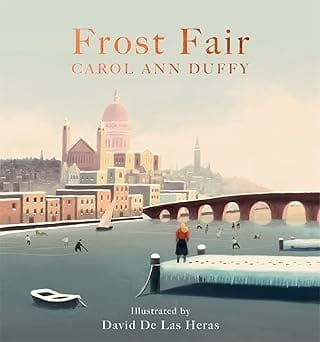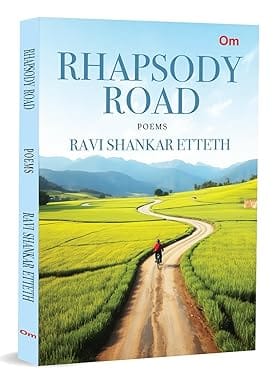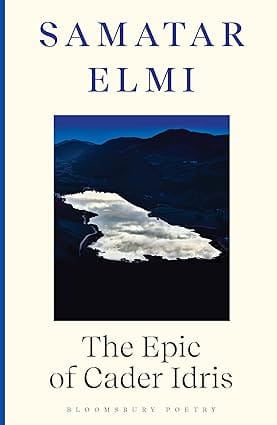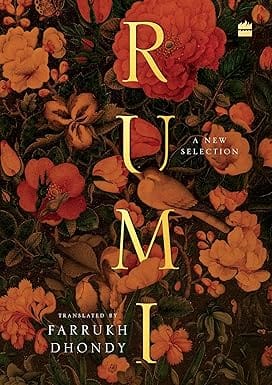-
Contemporary Fiction
- Contemporary Fiction
-
Children
- Children
-
Comics & Graphic Novels
- Comics & Graphic Novels
-
Non-Fiction
- Non-Fiction
-
Fiction
- Fiction
In a stunningly original mix of poetry, drama, and narrative, Anne Carson brings the red-winged Geryon from Autobiography of Red, now called ‘G’, into manhood, and through the complex labyrinths of the modern age. We join him as he travels with his friend and lover ‘Sad’ (short for Sad But Great), a war veteran, and with Ida, an artist, across a geography that ranges from plains of glacial ice to idyllic green pastures; from a psychiatric clinic to the sombre house where G’s mother must face her death. Haunted by Proust, juxtaposing the hunger for flight with the longing for family and home, this deeply powerful picaresque verse invites readers on an extraordinary journey of intellect, imagination, and soul.
About the Author
Anne Carson was born in Canada and teaches ancient Greek for a living.
--This text refers to an out of print or unavailable edition of this title.Excerpt. © Reprinted by permission. All rights reserved.
TIME PASSES TIME
does not pass. Time all
but passes. Time usually
passes. Time passing and
gazing. Time has no gaze.
Time as perseverance.
Time as hunger. Time in
a natural way. Time when
you were six the day a
mountain. Mountain time.
Time I don’t remember.
Time for a dog in an alley
caught in the beam of your
flashlight. Time not a
video. Time as paper
folded to look like a
mountain. Time smeared
under the eyes of the
miners as they rattle down
into the mine. Time if you
are bankrupt. Time if you
are Prometheus. Time if
you are all the little tubes
on the roots of a gorse
plant sucking greenish
black moistures up into
new scribbled continents.
Time it takes for the postal
clerk to apply her lipstick
at the back of the post
office before the
supervisor returns. Time
it takes for a cow to tip
over. Time in jail. Time
as overcoats in a closet.
Time for a herd of turkeys
skidding and surprised on
ice. All the time that has
soaked into the walls here.
Time between the little
clicks. Time compared to
the wild fantastic silence
of the stars. Time for the
man at the bus stop
standing on one leg to tie
his shoe. Time taking
Night by the hand and
trotting off down the road.
Time passes oh boy. Time
got the jump on me yes it
did.
--
SHUFFLING RECIPES
COUPONS horoscopes
in a kitchen drawer he turns
up an old B&W
photograph of her posed in
dashing swim costume on
some long ago back porch.
One leg forward like a
Greek kouros a cigarette
in the other hand she
glows as a drop of water
glows in sun. She looks
sexually astute in a way
that terrifies him he puts
this aside and all at once
the grainy photograph the
early marvel of her life
flung up at him a thing
hardly believable! knocks
him to his knees. He grips
his arms and weeps. Pain
catches the whole insides
of him and wrings it.
Oddly now remembering
his grandmother’s wringer
washer silvergreen and
upright on a platform of
wet boards in her back
kitchen beside the
washing tubs. How
carefully he’d been taught
to feed a piece of dripping
cloth between the two big
lips of the rollers while
she cranked the handle
and the cloth grabbed
fforward to emerge on the
other side as a weird
compressed pane of itself.
He hadn’t known his
grandmother long or well.
She smelled of Noxzema.
Didn’t like doctors.
Believed in herbs and the
Bible. When the apostles
walked down the street
she said their shadows
would heal people. His
mother once told him a
story about her dying.
They never liked each
other hadn’t visited for
years but someone
arranged a phone call. So
there they were mother
and daughter on the
telephone separate cities
separate nights both
suffering from asthma and
so moved they couldn’t
speak. I heard her
breathing I knew what it
was his mother said. He
looks up. He’d almost
forgot about the rain.
Unloading on the roof and
squandering down the
gutters. Rain continuous
since the funeral a
wrecking rattling
bewildering Lethe-
knuckling mob of rain. A
rain with no instructions.
--
WIFE OF BRAIN
Mothers in summer
Mothers in winter
Mothers in autumn
Mothers in spring
Mothers at altitude
Mothers in solitude
Mothers as platitude
Mothers in spring
Mothers banking their shots
Mothers grackling their throats
Mothers dumped from their boats
In spring
Mothers as ice
Or when they are nice
No one more nice
In spring
Mothers ashamed and Ablaze and clear
At the end
As they are
As they almost all are, and then
Mothers don’t come around
Again In spring
Review
“Red Doc> is a clock that takes the measure of its readers and their world by entrancing them with anachronism and myth. . . .Carson explores questions like: can studying the past help us to understand the present or to prepare for the future? Do we need hindsight? Are the past and present continuous? Carson shows us that what stands between contemporary readers and the ancient world only appears to be substantial. Peering into the prose‘documents’ that account for history from a safe distance, Carson suggests, we risk falling into [an] abyss, a volcanic past that promises to flow into the present and freeze itself over our shapes. Our mythic heroes suffer from PTSD. We’re about to be covered up with ash, even though no one smokes anymore. Red Doc> manages to tell, along with Geryon’s story, something of the toll the last 15 years have taken all of us, and the earth. The characters’ grief for losses sustained in their anachronistic, mythic world becomes an elegy of losses in our own.” —Emily Anderson, Full Stop
“Striking . . . Exhilarating . . . Carson has a reputation for difficulty, which is actually identical to her sense of playfulness. . . . Whimsy and obliquity dance hand in hand. . . . Red Doc> remains lucid and accessible, vernacular, friendly even, without sacrificing its iridescent, surrealist sheen. . . . Reading [it] is like being plunged under an iceberg: same world, same old friends, strange new light. . . . Carson bends time. She contracts universes . . . Red Doc> is a consummate love story, a book about friendship, companionship, motherhood, sex. It charts the failures of mutations of love, their imperfections, their infidelities and deflations: the strangeness of how they actually manifest. . . . Autobiography of Red was a story of dawning to your own peculiar monstrosity. Red Doc> is what happens when that peculiarity finds its full form, when it stretches, unfurls, lives beyond the confines of your life.” —Camden Avery, The Rumpus
“Red Doc> may find Geryon all grown up and answering simply to ‘G,’ but Carson’s red-winged anti-hero is still the crown prince of erotic, melancholy foibles, and the crew he assembles in this long-awaited sequel is as stunning and strange a cast as the one introduced in 1998’s Autobiography of Red. Red Doc> maintains love triangles and terse metaphors that drove the first book . . . but also finds a way to push Geryon into new territories of dry, vaudevillian Americana. Whether she’s talking war vets, flying cows, Latin etymology or Elvis, Carson once again blurs the lines of prose and poetry, and challenging both genres within a single poem.” —American Poet
“With Red Doc>, Carson revisits her readers’ favorite red-winged monster, but some things have changed. . . . One could call Red Doc> a road-trip story, but as is true with most of Carson’s writing, it belies any kind of label or category. A majority of the text slices down the center of each page in a single column, looking like an unswerving road in the middle of nowhere. With this book, Carson demands more from her readers in terms of concentration and patience (in a good way) than her previous books. Unexpected leaps of time, place and perspective occur frequently; throughout, Carson interjects short sections which operate as something of Greek chorus, or meta-commentary on the narrative itself. During other moments, the author moves in to the dreamlike point of view. As in Autobiography, familiar preoccupations emerge in Red Doc>: the Proustian movement of time, aging, love triangles, desire, trauma. Dramatic plot points propel the adventure forward—a robbery, a riot, a death. With each unexpected turn, Carson’s lyrical language effortlessly lifts pure moments of hope and despair off the page . . . Autobiography of Red and Red Doc> can be read together, or apart. The latter certainly serves as a sequel of sorts, but the strange, elliptical narrative also bends into something else altogether. It stands on its own—and takes the reader on a singular journey of longing and grief. In an interview published in the Paris Review in the fall of 2004, Carson said, ‘I write to find out what I think about something.’ It is her readers’ very good fortune that she does.” —S. Kirk Walsh, San Francisco Chronicle
“Breathtaking . . . Stunning . . . Personal, necessary and important. Anne Carson has a history of doing unpredictable and genre-crossing things. . . . [Her] palatable, popular, sophisticated and who-cares approach may have done the most and best work in the last two decades to stop people worrying so much about what’s poetry and what’s not. . . . She’s among our most exciting poets . . . reliably ingenious, full of charisma and surprise. Lesser poets who behave more predictably and risk less are easier to praise—and not as important. Each new Carson project comes with new parameters. Autobiography of Red is whimsical, dark, interestingly creepy and moving. It seems to me—though many readers disagree—to be created out of willed obsession. Geryon and Herakles [of Autobiography] reunite in Red Doc>; middle-aged, Geryon is now G, still a cattle-herder if not much of an artist, though he reads Proust and Daniil Kharms, the Russian Soviet-era surrealist-absurdist. Herakles is now called Sad But Great—‘Sad,’ for short—a traumatized veteran of a recent war. This adds a welcome political dimension. G and Sad take a road trip, ending up in any icy northland. A handful of other characters derive from Greek mythology. Hermes, a mysterious man in a silver tuxedo. Io, the nymph turned into a cow by Zeus, is the loveliest member of G’s herd, a sexy musk ox. . . . Carson has, over the years, moved closer to bizarreness for the sake of bizarreness—but she still pulls it off, mainly because the impulse behind it is mischief. ‘Can I get away with this?’ she seems to ask. And she does—because it’s fun. She’s having fun. Here’s what else she gets away with: Most of the poems are delivered in narrow strips of type, a format that speed you down the page, as if creating a chute for language. It also constricts in ways that put useful pressure on the poems’ wild music and wilder state of mind. Carson remains a master of idiosyncratic figures, delivering metaphor and simile casually and suddenly, while keeping her language idiomatically oddball. . . . To read Carson is continually to be disoriented and reoriented, grabbed and dropped. . . . Serious poetry readers like to be put off balance, feel their stomachs drop. Red Doc> invites confusion, and invites us to read for plot. . . . It succeeds as linguistic confrontation. Read this book. You’ll find it hard to forget.” —Daisy Fried, The New York Times Book Review
“Bittersweet . . . More than any other living writer, Carson thrusts against the confines of genre, language and poetic convention, generating something that, however dense and difficult, is spectacularly thought-provoking. Red Doc>, a sequel to Autobiography of Red, is yet another example of Carson’s supreme ability to incinerate literary preconceptions and, out of their ashes, produce a masterful piece of writing. . . . [Red Doc>’s] tidy rectangular columns that shoot through the center of the page . . . give the book an uncomfortable sense of urgency, claustrophobia and personality. In Red Doc>, Carson tends to her words with the care of a poet but constructs its narrative with the imperfect hand of a novelist. The resulting product is disorienting at times, emotional at others, and almost always sublime. While Autobiography of Red—with its long lines and plain syntax—seemed like prose on the verge of verse, it is the poetry that wins out as the overly dominating force in Red Doc>. Powerful . . . beautiful.” —Max Radwin, The Michigan Daily
“Red Doc> continues a conversation Carson has been having throughout her long and storied tenure as a poet, translator, essayist and novelist or, most often, as an alloy of all four. Carson lays claim to the title of trans-genre laureate, a writer who blurs lines so adeptly that librarians and booksellers must spend grueling hours contemplating shelf space for her books. Red Doc> is neither a novel nor a poem nor a Greek tragedy, but rather some recombinant heterotopia, a space where ideal forms of genre exist only as fragments and echoes of the whole. It unfurls like a tapestry, colored with neoclassical heroes, albino musk ox, ice bats, homicidal cucumbers, choral interludes, oracles, madmen and quacks. Carson has returned to a subject clearly near and dear to her, the refiguring of Greek mythology, specifically the story of the red-winged monster Geyron and his lover-cum-nemesis Herakles. . . . Carson pits simple, everyday language against atypical formatting. She elides common punctuation and subverts formal expectation, squeezing most of the book’s text into newspaper like columns or using elements borrowed from concrete poetry. Yet the story remains compelling at the same time. The reader is flummoxed, intrigued, pulled along and, above all, curious about what’s coming next. Minimalist details, playful wit and unorthodox typography control not only the pacing of the story, but also the perspective and characterization of its players. . . . Carson asks us to think deeply as we read; to travel, to feel, to change. She generates offbeat and peculiar storylines. The language and form charm us like potions, drawing us further into this strange world. Trying to make explicit sense of the ‘events’ only gets in the way of appreciation. Far better to be enchanted than to understand. . . . [A] careful reader, one willing to pay attention and reread, will be rewarded. . . . Carson soars above the tedious complaints of her critics who say she’s not poetic enough to be a poet and nor focused enough to be a novelist. Heretical, inventive, daring and dazzling, Carson challenges the settled principles that try to define literature, and in so doing, pushes her vision forward into uncharted worlds. And she does all this while maintaining a sharp sense of humor. . . . What Carson accomplishes in her writing is an upheaval of expectation. She pulls at meaning, at definitions, at connotations and denotations of words, at the very fabric of language, unraveling that wonderful tapestry she sets out to create. . . . Reading anything by Carson is a journey, fraught with peril, difficulty and, yes, a hint of fear. . . . By excavating ancient myths, by reconfiguring monsters and villains and gods into contemporary characters, Carson reminds us that literature may not possess answers. Mere words may not comfort us from our fears, but they can help us ask the big questions. . . . Carson’s not writing poems or novels, she’s dancing a tango on the page. . . . Perhaps this is the great wisdom: there are no instructions, only a bewildering cleansing, a rain of words to obscure the tears. Carson leaves us alone to ponder the mystery. She offers no answers, only provides the glorious space for that pondering.” —Richard Farrell, Numéro Cinq
“A monstrous amalgamation of antiquity and post-modernism, caught somewhere between poetry and prose, lies Anne Carson’s stunning new book Red Doc>. Carson strikes an impressive balance between all the themes and ideas that Red Doc> is built from and manages create a devastatingly relatable tale steeped in Greek myth. . . . Plot-wise, Red Doc> is a difficult, fantastical, read, but Carson imbues her characters with remarkably human ideas. Geryon may be a monster, but struggles deeply with human relationships, memories, and loss. . . . Carson certainly sequences her words like a poet, but maintains a remarkably fast, prose-like pace through Red Doc>; it’s surprisingly easy to slide down these chutes with reckless abandon and tear through sets of lines as if they were simply a spaced-out sentence. She uses this sense of speed much to her advantage . . . Just as Carson’s story exists between monstruous and human, her use of form toes the line between prose and poetry and creates a new kind of novel in verse. It’s entirely fresh and possesses a poignancy that beautifully mirrors the peculiarity of what actually goes on the story: repeated themes of doors, shadowy hallways and plumes of rising smoke and foam give these pages another fascinating dimension . . . Perhaps Carson’s vertiginous columns are meant to lift her readers and transcend the boundaries of form and genre. Or perhaps they’re simply another dark corridor, leading to some unexplored depths.” —Jeff Alford, About.com Contemporary Literature
“A mischievous blend of genres that is difficult to classify, but a joy to read. . . . A companion piece to the now-classic Autobiography of Red, [it] continues her effort to revive the pleasures of narrative verse, and, facing the dread of mortality, to create spaces that are suspended in time. . . . In Red Doc>, which can [like Autobiography] be read as fiction or poetry, darkly whimsical moments abound, and they charm. . . . Carson delights in the kinetic energies of danger and desire that drive most novels, [and] shuffles the book’s real-time narrative with memories and dreams . . . Her poetry lets us surrender to the moment, then it surprises with action . . . Since the end returns us to the beginning, in a sense, with G revisiting his mother on her deathbed, it all may as well have been a dream. Either way, it's a memorable ride.” —David Varno, Cleveland Plain Dealer
“[Carson’s] phrases and images . . . swoop and beguile like hidden messages. Cryptograms from other civilizations, or hoaxes perpetrated by pranksters by moonlight? Say what you will about Carson, she doesn’t play it safe. [Her] imprecision tickles my mind. Carson doesn’t skirt preciousness, she plows through it on an ATV, kicking up shadows and moons and ‘the ancient smell of ice.’ . . . . Her preciousness usually doubles back on itself. When she goes for beauty—whether it ends in a swish or an air-ball—she follows up with a prophylactic does of demotic. . . . In Red Doc>, it’s G’s dying mother who provides the all-too-human relief. . . . Red Doc> is about the transition to adulthood once youth is just a dream song, a downgrade from Herakles to Sad. From poetry to prose . . . She is writing the poetry that remains, once our equations start making sense. A house > being on fire.” —Michael Robbins, The New York Observer
“It’s been a decade and a half since Carson published Autobiography of Red, that ambitious novel in verse that tells the modern-day story of Geryon, the red-winged monster meant to be slayed by Hercules. This month, Geryon (now simply called ‘G’) stars in Carson’s unexpected, dizzying follow-up, Red Doc>, sure to be the verse event of the season.” —Chelsea Allison, Vogue.com
“Carson is one of the most famous poets writing in English; her many rabid fans await her new books with eager anticipation. . . . This new book is a sequel to the book that first made Carson famous, Autobiography of Red. It takes Geryon, the red demon-boy who starred in that book, ages him to adulthood, renames him ‘G,’ and sets him loose in a confusing, fast-paced contemporary world. A kind of novel in (mostly) prose poetry, this book follows G through familial, erotic, and political discoveries on an eventual road trip with a lover named ‘Sad.’ Throughout, Carson reveals a quirky wisdom, which feels as cool as it does true: ‘Time passes time does not pass. Time all but passes. Time usually passes.’” —Publishers Weekly (starred review)
“A shape-shifting verse novel that’s both playful and compelling” —Time Out New York
“The events in Red Doc>, not so much recounted as erupting, have an instability suggestive of Alice in Wonderland; their narration could be the tossing and turning [found in] Finnegan’s Wake. Their sequence belongs to no earthly clock but to one marking comet time. Red Doc> doesn’t address us. It talks to itself and permits us to eavesdrop while giving us no particular assistance in making out what we raggedly hear about our times, about art, and about being human. What seeps out from a partly closed door is a sign that it is supremely worth hearing, and we should try to listen better. Every little while a phrase emerges of such poetic force that it hooks us and pulls us in. . . . What shines in Red Doc> is Carson’s lines. This is not easy reading . . . the difficulties are indeed considerable. [But] we have no sense they are gratuitous: Something very worthwhile is going on. . . . As with a roller coaster, the transitions make us look forward to the next splendid plunge. And we plunge.” —Richard Eder, The Boston Globe
“[Carson] has never been a particularly ‘easy’ writer, for all her wit and incisive directness. She’s too formally playful. She is more difficult than ever in Red Doc>, but is still as singular, radical, and intellectually bracing as no other poet anyone could name. . . . If you want to kick the word ‘genius’ in the poet, scholar and translator’s direction, very few will be sufficiently exercised to argue much. If that’s NOT what she is, it certainly denotes her rarity and elevation over the morass nicely. . . . . In Red Doc>, G ‘doesn’t merely sing to [his] herd at night. He may talk to them listen stand in the herd. Listen . . . a low purple listening but with a height to the sound.’ Welcome to Anne Carson’s world. Bring your own commas. . . . [She is] one the most remarkable of all living writers.” —Jeff Simon, The Buffalo News
“Carson is usually referred to as a poet, but just about no one finds that label satisfying: her fans (for whom she does something more than poetry), her critics (for whom she does something less than poetry) or herself. She often labels her work in conspicuously nonpoetic terms. [She] gives the impression—on the page, at readings—of someone from another world, either extraterrestrial or ancient, for whom our modern earthly categories are too artificial and simplistic to contain anything like the real truth she is determined to communicate. For two decades her work has moved—phrase by phrase, line by line, project by improbable project—in directions that a human brain would never naturally move. The approach has won her awards, accolades and an electric reputation in the literary world . . . Red Doc> is arguably not poetry. Most of the text runs like a racing stripe down the center of the page . . . [the] result of an accident with the computer. Carson hit a wrong button, and it made the margins go crazy. She found this instantly liberating. Red Doc> is the sequel—sort of—to Autobiography of Red, one of the crossover classics of contemporary poetry. The book is strange and sweet and funny, and the remoteness of the ancient myth crossed with the familiarity of the modern setting creates a particularly Carsonian effect: the paradox of distant closeness. Red Doc> is more difficult; its style is fragmentary, its pace herky-jerky, its rhythms of information trickier to pick up. . . .[and was] also, for Carson, much more difficult to write. Toward the end, the story leaps into tragic territory: the death of Geryon’s mother. They are some of the saddest pages I’ve ever read. . . .The most animated moments in my discussions with Carson came when she spoke about boredom, which she can’t stand. When she writes, she has a constant drive to feel as if she’s doing something new with every sentence. When she lectures, regardless of the subject, she wants to uproot people. ‘I’m really trying to make people’s minds move, which is not something they’re naturally inclined to do,’ she told me. ‘We have a kind of inertia, sitting and listening. But it’s really important to get somehow in the mind and make it move somewhere it has never moved before. That happens partly because the material is mysterious or unknown, but mostly because of the way you push the material around from word to word in a sentence. And it’s that that I’m more interested in doing . . . How can we move in a way we’ve never moved before, mentally? That seems like the most exciting thing to do with your head.’” —Sam Anderson, The New York Times Magazine
“With profound wit and arresting sorrow, Red Doc> continues the story of [an] inextricable pair, Herakles and Geryon—hero and monster, vanquisher and vanquished, lover and loved. In this version, Geryon lives an isolated existence as ‘G,’ and libertine-turned-soldier Herakles has just served a tour of duty in the Middle-East, coming back a shell-shocked shell of his former self. . . . Red Doc> serves as neither a proper sequel to Autobiography of Red nor as a historically consistent continuation. The established characters provide immediate name recognition and backstory, but just as one need not read The Iliad to understand The Odyssey, it isn’t necessary to cycle back and first read Autobiography of Red (though—purely as a lifestyle decision—reading the book would be a very good idea). . . . What binds two individuals? How does one man living a separate life across the ocean continue to exert a hold upon those left at home? Like the earlier exploits of Geryon and Herakles, Carson launches [her characters] on a twisted picaresque, indulging her exquisite eye for natural detail. What holds these two together? Names and dynamics may change, but what endures is the story of a lost, misunderstood boy, and the one with the power to destroy him. . . . Carson frames precise, photographic images and constructs sturdy columns of text [that] bolster Red Doc> as Carson swings through a variety of techniques that refract the madness of war, from the systemic absurdism of Catch-22 to the post-modern flights of Gravity’s Rainbow to the dead-bang temporal concussions of&n
- Home
- Fiction
- Poetry Drama & Literary Criticism
- Red Doc>
Red Doc>
SIZE GUIDE
- ISBN: 9780224097574
- Author: Anne Carson
- Publisher: Jonathan Cape
- Pages: 176
- Format: Paperback
Book Description
In a stunningly original mix of poetry, drama, and narrative, Anne Carson brings the red-winged Geryon from Autobiography of Red, now called ‘G’, into manhood, and through the complex labyrinths of the modern age. We join him as he travels with his friend and lover ‘Sad’ (short for Sad But Great), a war veteran, and with Ida, an artist, across a geography that ranges from plains of glacial ice to idyllic green pastures; from a psychiatric clinic to the sombre house where G’s mother must face her death. Haunted by Proust, juxtaposing the hunger for flight with the longing for family and home, this deeply powerful picaresque verse invites readers on an extraordinary journey of intellect, imagination, and soul.
About the Author
Anne Carson was born in Canada and teaches ancient Greek for a living.
--This text refers to an out of print or unavailable edition of this title.Excerpt. © Reprinted by permission. All rights reserved.
TIME PASSES TIME
does not pass. Time all
but passes. Time usually
passes. Time passing and
gazing. Time has no gaze.
Time as perseverance.
Time as hunger. Time in
a natural way. Time when
you were six the day a
mountain. Mountain time.
Time I don’t remember.
Time for a dog in an alley
caught in the beam of your
flashlight. Time not a
video. Time as paper
folded to look like a
mountain. Time smeared
under the eyes of the
miners as they rattle down
into the mine. Time if you
are bankrupt. Time if you
are Prometheus. Time if
you are all the little tubes
on the roots of a gorse
plant sucking greenish
black moistures up into
new scribbled continents.
Time it takes for the postal
clerk to apply her lipstick
at the back of the post
office before the
supervisor returns. Time
it takes for a cow to tip
over. Time in jail. Time
as overcoats in a closet.
Time for a herd of turkeys
skidding and surprised on
ice. All the time that has
soaked into the walls here.
Time between the little
clicks. Time compared to
the wild fantastic silence
of the stars. Time for the
man at the bus stop
standing on one leg to tie
his shoe. Time taking
Night by the hand and
trotting off down the road.
Time passes oh boy. Time
got the jump on me yes it
did.
--
SHUFFLING RECIPES
COUPONS horoscopes
in a kitchen drawer he turns
up an old B&W
photograph of her posed in
dashing swim costume on
some long ago back porch.
One leg forward like a
Greek kouros a cigarette
in the other hand she
glows as a drop of water
glows in sun. She looks
sexually astute in a way
that terrifies him he puts
this aside and all at once
the grainy photograph the
early marvel of her life
flung up at him a thing
hardly believable! knocks
him to his knees. He grips
his arms and weeps. Pain
catches the whole insides
of him and wrings it.
Oddly now remembering
his grandmother’s wringer
washer silvergreen and
upright on a platform of
wet boards in her back
kitchen beside the
washing tubs. How
carefully he’d been taught
to feed a piece of dripping
cloth between the two big
lips of the rollers while
she cranked the handle
and the cloth grabbed
fforward to emerge on the
other side as a weird
compressed pane of itself.
He hadn’t known his
grandmother long or well.
She smelled of Noxzema.
Didn’t like doctors.
Believed in herbs and the
Bible. When the apostles
walked down the street
she said their shadows
would heal people. His
mother once told him a
story about her dying.
They never liked each
other hadn’t visited for
years but someone
arranged a phone call. So
there they were mother
and daughter on the
telephone separate cities
separate nights both
suffering from asthma and
so moved they couldn’t
speak. I heard her
breathing I knew what it
was his mother said. He
looks up. He’d almost
forgot about the rain.
Unloading on the roof and
squandering down the
gutters. Rain continuous
since the funeral a
wrecking rattling
bewildering Lethe-
knuckling mob of rain. A
rain with no instructions.
--
WIFE OF BRAIN
Mothers in summer
Mothers in winter
Mothers in autumn
Mothers in spring
Mothers at altitude
Mothers in solitude
Mothers as platitude
Mothers in spring
Mothers banking their shots
Mothers grackling their throats
Mothers dumped from their boats
In spring
Mothers as ice
Or when they are nice
No one more nice
In spring
Mothers ashamed and Ablaze and clear
At the end
As they are
As they almost all are, and then
Mothers don’t come around
Again In spring
Review
“Red Doc> is a clock that takes the measure of its readers and their world by entrancing them with anachronism and myth. . . .Carson explores questions like: can studying the past help us to understand the present or to prepare for the future? Do we need hindsight? Are the past and present continuous? Carson shows us that what stands between contemporary readers and the ancient world only appears to be substantial. Peering into the prose‘documents’ that account for history from a safe distance, Carson suggests, we risk falling into [an] abyss, a volcanic past that promises to flow into the present and freeze itself over our shapes. Our mythic heroes suffer from PTSD. We’re about to be covered up with ash, even though no one smokes anymore. Red Doc> manages to tell, along with Geryon’s story, something of the toll the last 15 years have taken all of us, and the earth. The characters’ grief for losses sustained in their anachronistic, mythic world becomes an elegy of losses in our own.” —Emily Anderson, Full Stop
“Striking . . . Exhilarating . . . Carson has a reputation for difficulty, which is actually identical to her sense of playfulness. . . . Whimsy and obliquity dance hand in hand. . . . Red Doc> remains lucid and accessible, vernacular, friendly even, without sacrificing its iridescent, surrealist sheen. . . . Reading [it] is like being plunged under an iceberg: same world, same old friends, strange new light. . . . Carson bends time. She contracts universes . . . Red Doc> is a consummate love story, a book about friendship, companionship, motherhood, sex. It charts the failures of mutations of love, their imperfections, their infidelities and deflations: the strangeness of how they actually manifest. . . . Autobiography of Red was a story of dawning to your own peculiar monstrosity. Red Doc> is what happens when that peculiarity finds its full form, when it stretches, unfurls, lives beyond the confines of your life.” —Camden Avery, The Rumpus
“Red Doc> may find Geryon all grown up and answering simply to ‘G,’ but Carson’s red-winged anti-hero is still the crown prince of erotic, melancholy foibles, and the crew he assembles in this long-awaited sequel is as stunning and strange a cast as the one introduced in 1998’s Autobiography of Red. Red Doc> maintains love triangles and terse metaphors that drove the first book . . . but also finds a way to push Geryon into new territories of dry, vaudevillian Americana. Whether she’s talking war vets, flying cows, Latin etymology or Elvis, Carson once again blurs the lines of prose and poetry, and challenging both genres within a single poem.” —American Poet
“With Red Doc>, Carson revisits her readers’ favorite red-winged monster, but some things have changed. . . . One could call Red Doc> a road-trip story, but as is true with most of Carson’s writing, it belies any kind of label or category. A majority of the text slices down the center of each page in a single column, looking like an unswerving road in the middle of nowhere. With this book, Carson demands more from her readers in terms of concentration and patience (in a good way) than her previous books. Unexpected leaps of time, place and perspective occur frequently; throughout, Carson interjects short sections which operate as something of Greek chorus, or meta-commentary on the narrative itself. During other moments, the author moves in to the dreamlike point of view. As in Autobiography, familiar preoccupations emerge in Red Doc>: the Proustian movement of time, aging, love triangles, desire, trauma. Dramatic plot points propel the adventure forward—a robbery, a riot, a death. With each unexpected turn, Carson’s lyrical language effortlessly lifts pure moments of hope and despair off the page . . . Autobiography of Red and Red Doc> can be read together, or apart. The latter certainly serves as a sequel of sorts, but the strange, elliptical narrative also bends into something else altogether. It stands on its own—and takes the reader on a singular journey of longing and grief. In an interview published in the Paris Review in the fall of 2004, Carson said, ‘I write to find out what I think about something.’ It is her readers’ very good fortune that she does.” —S. Kirk Walsh, San Francisco Chronicle
“Breathtaking . . . Stunning . . . Personal, necessary and important. Anne Carson has a history of doing unpredictable and genre-crossing things. . . . [Her] palatable, popular, sophisticated and who-cares approach may have done the most and best work in the last two decades to stop people worrying so much about what’s poetry and what’s not. . . . She’s among our most exciting poets . . . reliably ingenious, full of charisma and surprise. Lesser poets who behave more predictably and risk less are easier to praise—and not as important. Each new Carson project comes with new parameters. Autobiography of Red is whimsical, dark, interestingly creepy and moving. It seems to me—though many readers disagree—to be created out of willed obsession. Geryon and Herakles [of Autobiography] reunite in Red Doc>; middle-aged, Geryon is now G, still a cattle-herder if not much of an artist, though he reads Proust and Daniil Kharms, the Russian Soviet-era surrealist-absurdist. Herakles is now called Sad But Great—‘Sad,’ for short—a traumatized veteran of a recent war. This adds a welcome political dimension. G and Sad take a road trip, ending up in any icy northland. A handful of other characters derive from Greek mythology. Hermes, a mysterious man in a silver tuxedo. Io, the nymph turned into a cow by Zeus, is the loveliest member of G’s herd, a sexy musk ox. . . . Carson has, over the years, moved closer to bizarreness for the sake of bizarreness—but she still pulls it off, mainly because the impulse behind it is mischief. ‘Can I get away with this?’ she seems to ask. And she does—because it’s fun. She’s having fun. Here’s what else she gets away with: Most of the poems are delivered in narrow strips of type, a format that speed you down the page, as if creating a chute for language. It also constricts in ways that put useful pressure on the poems’ wild music and wilder state of mind. Carson remains a master of idiosyncratic figures, delivering metaphor and simile casually and suddenly, while keeping her language idiomatically oddball. . . . To read Carson is continually to be disoriented and reoriented, grabbed and dropped. . . . Serious poetry readers like to be put off balance, feel their stomachs drop. Red Doc> invites confusion, and invites us to read for plot. . . . It succeeds as linguistic confrontation. Read this book. You’ll find it hard to forget.” —Daisy Fried, The New York Times Book Review
“Bittersweet . . . More than any other living writer, Carson thrusts against the confines of genre, language and poetic convention, generating something that, however dense and difficult, is spectacularly thought-provoking. Red Doc>, a sequel to Autobiography of Red, is yet another example of Carson’s supreme ability to incinerate literary preconceptions and, out of their ashes, produce a masterful piece of writing. . . . [Red Doc>’s] tidy rectangular columns that shoot through the center of the page . . . give the book an uncomfortable sense of urgency, claustrophobia and personality. In Red Doc>, Carson tends to her words with the care of a poet but constructs its narrative with the imperfect hand of a novelist. The resulting product is disorienting at times, emotional at others, and almost always sublime. While Autobiography of Red—with its long lines and plain syntax—seemed like prose on the verge of verse, it is the poetry that wins out as the overly dominating force in Red Doc>. Powerful . . . beautiful.” —Max Radwin, The Michigan Daily
“Red Doc> continues a conversation Carson has been having throughout her long and storied tenure as a poet, translator, essayist and novelist or, most often, as an alloy of all four. Carson lays claim to the title of trans-genre laureate, a writer who blurs lines so adeptly that librarians and booksellers must spend grueling hours contemplating shelf space for her books. Red Doc> is neither a novel nor a poem nor a Greek tragedy, but rather some recombinant heterotopia, a space where ideal forms of genre exist only as fragments and echoes of the whole. It unfurls like a tapestry, colored with neoclassical heroes, albino musk ox, ice bats, homicidal cucumbers, choral interludes, oracles, madmen and quacks. Carson has returned to a subject clearly near and dear to her, the refiguring of Greek mythology, specifically the story of the red-winged monster Geyron and his lover-cum-nemesis Herakles. . . . Carson pits simple, everyday language against atypical formatting. She elides common punctuation and subverts formal expectation, squeezing most of the book’s text into newspaper like columns or using elements borrowed from concrete poetry. Yet the story remains compelling at the same time. The reader is flummoxed, intrigued, pulled along and, above all, curious about what’s coming next. Minimalist details, playful wit and unorthodox typography control not only the pacing of the story, but also the perspective and characterization of its players. . . . Carson asks us to think deeply as we read; to travel, to feel, to change. She generates offbeat and peculiar storylines. The language and form charm us like potions, drawing us further into this strange world. Trying to make explicit sense of the ‘events’ only gets in the way of appreciation. Far better to be enchanted than to understand. . . . [A] careful reader, one willing to pay attention and reread, will be rewarded. . . . Carson soars above the tedious complaints of her critics who say she’s not poetic enough to be a poet and nor focused enough to be a novelist. Heretical, inventive, daring and dazzling, Carson challenges the settled principles that try to define literature, and in so doing, pushes her vision forward into uncharted worlds. And she does all this while maintaining a sharp sense of humor. . . . What Carson accomplishes in her writing is an upheaval of expectation. She pulls at meaning, at definitions, at connotations and denotations of words, at the very fabric of language, unraveling that wonderful tapestry she sets out to create. . . . Reading anything by Carson is a journey, fraught with peril, difficulty and, yes, a hint of fear. . . . By excavating ancient myths, by reconfiguring monsters and villains and gods into contemporary characters, Carson reminds us that literature may not possess answers. Mere words may not comfort us from our fears, but they can help us ask the big questions. . . . Carson’s not writing poems or novels, she’s dancing a tango on the page. . . . Perhaps this is the great wisdom: there are no instructions, only a bewildering cleansing, a rain of words to obscure the tears. Carson leaves us alone to ponder the mystery. She offers no answers, only provides the glorious space for that pondering.” —Richard Farrell, Numéro Cinq
“A monstrous amalgamation of antiquity and post-modernism, caught somewhere between poetry and prose, lies Anne Carson’s stunning new book Red Doc>. Carson strikes an impressive balance between all the themes and ideas that Red Doc> is built from and manages create a devastatingly relatable tale steeped in Greek myth. . . . Plot-wise, Red Doc> is a difficult, fantastical, read, but Carson imbues her characters with remarkably human ideas. Geryon may be a monster, but struggles deeply with human relationships, memories, and loss. . . . Carson certainly sequences her words like a poet, but maintains a remarkably fast, prose-like pace through Red Doc>; it’s surprisingly easy to slide down these chutes with reckless abandon and tear through sets of lines as if they were simply a spaced-out sentence. She uses this sense of speed much to her advantage . . . Just as Carson’s story exists between monstruous and human, her use of form toes the line between prose and poetry and creates a new kind of novel in verse. It’s entirely fresh and possesses a poignancy that beautifully mirrors the peculiarity of what actually goes on the story: repeated themes of doors, shadowy hallways and plumes of rising smoke and foam give these pages another fascinating dimension . . . Perhaps Carson’s vertiginous columns are meant to lift her readers and transcend the boundaries of form and genre. Or perhaps they’re simply another dark corridor, leading to some unexplored depths.” —Jeff Alford, About.com Contemporary Literature
“A mischievous blend of genres that is difficult to classify, but a joy to read. . . . A companion piece to the now-classic Autobiography of Red, [it] continues her effort to revive the pleasures of narrative verse, and, facing the dread of mortality, to create spaces that are suspended in time. . . . In Red Doc>, which can [like Autobiography] be read as fiction or poetry, darkly whimsical moments abound, and they charm. . . . Carson delights in the kinetic energies of danger and desire that drive most novels, [and] shuffles the book’s real-time narrative with memories and dreams . . . Her poetry lets us surrender to the moment, then it surprises with action . . . Since the end returns us to the beginning, in a sense, with G revisiting his mother on her deathbed, it all may as well have been a dream. Either way, it's a memorable ride.” —David Varno, Cleveland Plain Dealer
“[Carson’s] phrases and images . . . swoop and beguile like hidden messages. Cryptograms from other civilizations, or hoaxes perpetrated by pranksters by moonlight? Say what you will about Carson, she doesn’t play it safe. [Her] imprecision tickles my mind. Carson doesn’t skirt preciousness, she plows through it on an ATV, kicking up shadows and moons and ‘the ancient smell of ice.’ . . . . Her preciousness usually doubles back on itself. When she goes for beauty—whether it ends in a swish or an air-ball—she follows up with a prophylactic does of demotic. . . . In Red Doc>, it’s G’s dying mother who provides the all-too-human relief. . . . Red Doc> is about the transition to adulthood once youth is just a dream song, a downgrade from Herakles to Sad. From poetry to prose . . . She is writing the poetry that remains, once our equations start making sense. A house > being on fire.” —Michael Robbins, The New York Observer
“It’s been a decade and a half since Carson published Autobiography of Red, that ambitious novel in verse that tells the modern-day story of Geryon, the red-winged monster meant to be slayed by Hercules. This month, Geryon (now simply called ‘G’) stars in Carson’s unexpected, dizzying follow-up, Red Doc>, sure to be the verse event of the season.” —Chelsea Allison, Vogue.com
“Carson is one of the most famous poets writing in English; her many rabid fans await her new books with eager anticipation. . . . This new book is a sequel to the book that first made Carson famous, Autobiography of Red. It takes Geryon, the red demon-boy who starred in that book, ages him to adulthood, renames him ‘G,’ and sets him loose in a confusing, fast-paced contemporary world. A kind of novel in (mostly) prose poetry, this book follows G through familial, erotic, and political discoveries on an eventual road trip with a lover named ‘Sad.’ Throughout, Carson reveals a quirky wisdom, which feels as cool as it does true: ‘Time passes time does not pass. Time all but passes. Time usually passes.’” —Publishers Weekly (starred review)
“A shape-shifting verse novel that’s both playful and compelling” —Time Out New York
“The events in Red Doc>, not so much recounted as erupting, have an instability suggestive of Alice in Wonderland; their narration could be the tossing and turning [found in] Finnegan’s Wake. Their sequence belongs to no earthly clock but to one marking comet time. Red Doc> doesn’t address us. It talks to itself and permits us to eavesdrop while giving us no particular assistance in making out what we raggedly hear about our times, about art, and about being human. What seeps out from a partly closed door is a sign that it is supremely worth hearing, and we should try to listen better. Every little while a phrase emerges of such poetic force that it hooks us and pulls us in. . . . What shines in Red Doc> is Carson’s lines. This is not easy reading . . . the difficulties are indeed considerable. [But] we have no sense they are gratuitous: Something very worthwhile is going on. . . . As with a roller coaster, the transitions make us look forward to the next splendid plunge. And we plunge.” —Richard Eder, The Boston Globe
“[Carson] has never been a particularly ‘easy’ writer, for all her wit and incisive directness. She’s too formally playful. She is more difficult than ever in Red Doc>, but is still as singular, radical, and intellectually bracing as no other poet anyone could name. . . . If you want to kick the word ‘genius’ in the poet, scholar and translator’s direction, very few will be sufficiently exercised to argue much. If that’s NOT what she is, it certainly denotes her rarity and elevation over the morass nicely. . . . . In Red Doc>, G ‘doesn’t merely sing to [his] herd at night. He may talk to them listen stand in the herd. Listen . . . a low purple listening but with a height to the sound.’ Welcome to Anne Carson’s world. Bring your own commas. . . . [She is] one the most remarkable of all living writers.” —Jeff Simon, The Buffalo News
“Carson is usually referred to as a poet, but just about no one finds that label satisfying: her fans (for whom she does something more than poetry), her critics (for whom she does something less than poetry) or herself. She often labels her work in conspicuously nonpoetic terms. [She] gives the impression—on the page, at readings—of someone from another world, either extraterrestrial or ancient, for whom our modern earthly categories are too artificial and simplistic to contain anything like the real truth she is determined to communicate. For two decades her work has moved—phrase by phrase, line by line, project by improbable project—in directions that a human brain would never naturally move. The approach has won her awards, accolades and an electric reputation in the literary world . . . Red Doc> is arguably not poetry. Most of the text runs like a racing stripe down the center of the page . . . [the] result of an accident with the computer. Carson hit a wrong button, and it made the margins go crazy. She found this instantly liberating. Red Doc> is the sequel—sort of—to Autobiography of Red, one of the crossover classics of contemporary poetry. The book is strange and sweet and funny, and the remoteness of the ancient myth crossed with the familiarity of the modern setting creates a particularly Carsonian effect: the paradox of distant closeness. Red Doc> is more difficult; its style is fragmentary, its pace herky-jerky, its rhythms of information trickier to pick up. . . .[and was] also, for Carson, much more difficult to write. Toward the end, the story leaps into tragic territory: the death of Geryon’s mother. They are some of the saddest pages I’ve ever read. . . .The most animated moments in my discussions with Carson came when she spoke about boredom, which she can’t stand. When she writes, she has a constant drive to feel as if she’s doing something new with every sentence. When she lectures, regardless of the subject, she wants to uproot people. ‘I’m really trying to make people’s minds move, which is not something they’re naturally inclined to do,’ she told me. ‘We have a kind of inertia, sitting and listening. But it’s really important to get somehow in the mind and make it move somewhere it has never moved before. That happens partly because the material is mysterious or unknown, but mostly because of the way you push the material around from word to word in a sentence. And it’s that that I’m more interested in doing . . . How can we move in a way we’ve never moved before, mentally? That seems like the most exciting thing to do with your head.’” —Sam Anderson, The New York Times Magazine
“With profound wit and arresting sorrow, Red Doc> continues the story of [an] inextricable pair, Herakles and Geryon—hero and monster, vanquisher and vanquished, lover and loved. In this version, Geryon lives an isolated existence as ‘G,’ and libertine-turned-soldier Herakles has just served a tour of duty in the Middle-East, coming back a shell-shocked shell of his former self. . . . Red Doc> serves as neither a proper sequel to Autobiography of Red nor as a historically consistent continuation. The established characters provide immediate name recognition and backstory, but just as one need not read The Iliad to understand The Odyssey, it isn’t necessary to cycle back and first read Autobiography of Red (though—purely as a lifestyle decision—reading the book would be a very good idea). . . . What binds two individuals? How does one man living a separate life across the ocean continue to exert a hold upon those left at home? Like the earlier exploits of Geryon and Herakles, Carson launches [her characters] on a twisted picaresque, indulging her exquisite eye for natural detail. What holds these two together? Names and dynamics may change, but what endures is the story of a lost, misunderstood boy, and the one with the power to destroy him. . . . Carson frames precise, photographic images and constructs sturdy columns of text [that] bolster Red Doc> as Carson swings through a variety of techniques that refract the madness of war, from the systemic absurdism of Catch-22 to the post-modern flights of Gravity’s Rainbow to the dead-bang temporal concussions of&n
Related Books
User reviews
NEWSLETTER
Subscribe to get Email Updates!
Thanks for subscribing.
Your response has been recorded.

India's Iconic & Independent Book Store offering a vast selection of books across a variety of genres Since 1978.
"We Believe In The Power of Books" Our mission is to make books accessible to everyone, and to cultivate a culture of reading and learning. We strive to provide a wide range of books, from classic literature, sci-fi and fantasy, to graphic novels, biographies and self-help books, so that everyone can find something to read.
Whether you’re looking for your next great read, a gift for someone special, or just browsing, Midland is here to make your book-buying experience easy and enjoyable.
We are shipping pan India and across the world.
For Bulk Order / Corporate Gifting
 +91 9818282497 |
+91 9818282497 |  [email protected]
[email protected]
Click To Know More
INFORMATION
POLICIES
ACCOUNT
QUICK LINKS
ADDRESS
Shop No.20, Aurobindo Palace Market, Near Church, New Delhi

